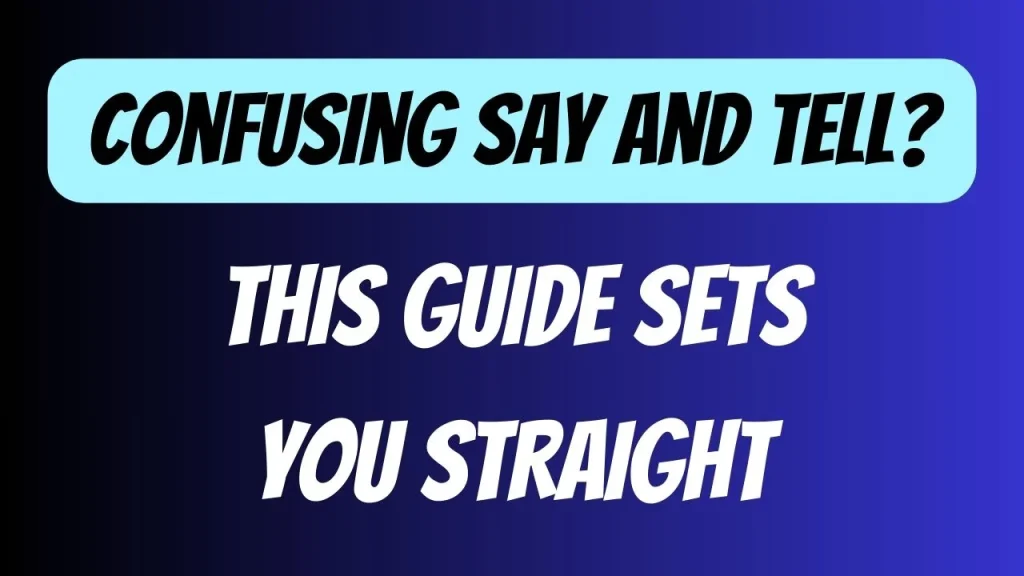
Confusing SAY and TELL? You’re not alone! Many language learners find these two words confusing due to their similar meanings and usage patterns. However, mastering the distinction between “say” and “tell” is essential for effective communication. In this comprehensive guide, we will unravel the mystery behind these verbs, providing you with a clear understanding of their nuances and helping you use them correctly in your conversations and writing.
The Basics: Definitions and Differences:
To start, let’s establish the fundamental definitions of “say” and “tell.” While both verbs involve communication, they are used in different contexts. “Say” refers to the act of expressing words, thoughts, or information aloud, while “tell” implies conveying something to someone specifically.
Grammatical Structures:
One key factor in distinguishing between “say” and “tell” lies in their grammatical structures.”Say” usually introduces a direct quotation or reported speech, while “tell” typically comes with an indirect object, specifying the recipient of the information.
Examples:
- She said, “I’ll be there at 7 p.m.”
- He told me that he would be there at 7 p.m.
In the first example, “say” introduces a direct quotation, indicating that the speaker expressed those exact words.
In the second example, “tell” is used with the indirect object “me.” This clarifies that the speaker actively directed the information to the listener.pen_spark
Objects and Usage Patterns:
Another aspect to consider is the presence or absence of an object. “Say” can be used without an object, whereas “tell” requires one. For instance:
- He said something.
- He told a story.
The first sentence uses “say” without an object. This indicates the person simply spoke, without specifying the content of their speech. In the second sentence, “tell” takes the object “a story.” This emphasizes that the person actively conveyed a specific narrative.
Furthermore, “tell” frequently accompanies specific objects like commands, requests, or questions.pen_spark
Examples include:
- She told him to be quiet.
- He told me to wait here.
- They told us where to go.
In these cases, “tell” is followed by an infinitive verb phrase or a clause representing a command, request, or question. This usage pattern does not apply to “say.”
Reported Speech and Idiomatic Expressions:
“Tell” allows for both reported speech and direct quotations, while “say” usually doesn’t introduce indirect objects. For example:
- She told me, “I love you.”
- He told everyone that he was resigning.
In these sentences, “tell” conveys the direct quotation or reported speech, while “say” does not involve an indirect object.
Additionally, certain idiomatic expressions use “tell” instead of “say.” Some examples include:
- Tell a joke
- Tell a lie
- Tell the truth
In these cases, “tell” is part of a fixed expression, and substituting it with “say” would alter the meaning.
Final Thoughts:
Understanding the distinctions between “say” and “tell” is vital for clear and accurate communication in English. Remember that speakers often follow “say” with a direct quotation or reported speech, can use it without an object, and do not need an indirect object. Conversely, “tell” usually needs an indirect object, requires an object, and suits commands, requests, or questions. By familiarizing yourself with these differences and practicing their usage, you will gain confidence in using “say” and “tell” appropriately in various contexts.
Learning a language takes time and effort, so don’t be discouraged if you find it challenging at first. With consistent practice and patience, you will gradually become more comfortable with these verbs. Keep honing your skills, and before you know it, using “say” and “tell” correctly will become second nature to you.